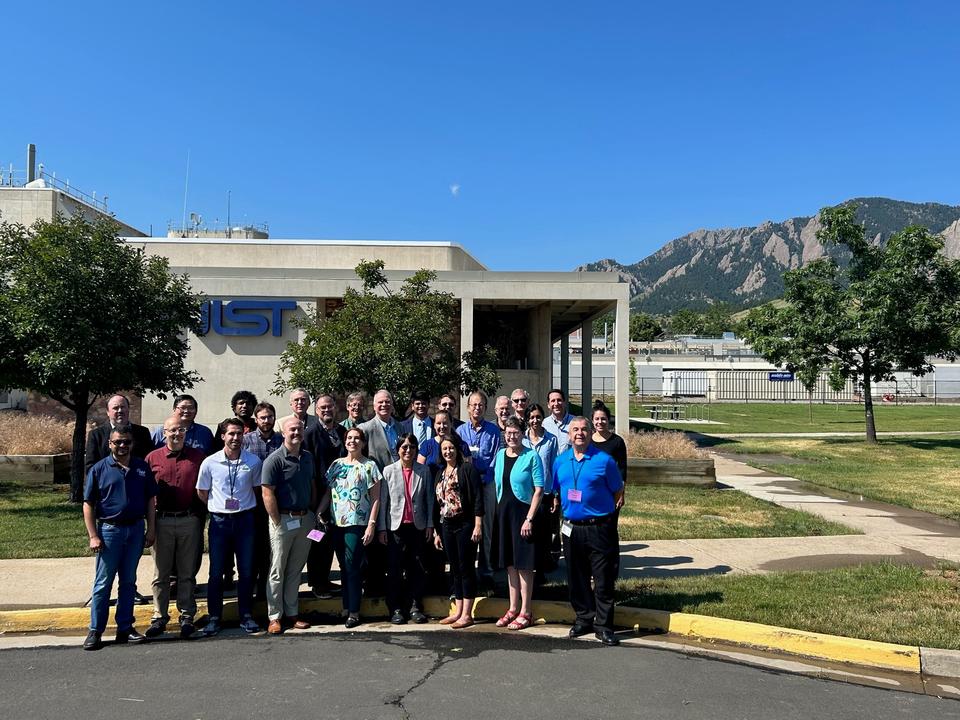Summary
The Advanced Cements and Concretes Consortium is convened by The National Institute of Standards and Technology (NIST) to work with stakeholders and support the development of measurements and standards for innovative construction materials.
BECOME A MEMBER
- Contact: lowcarbonconcrete [at] nist.gov (advancedconcretes[at]nist[dot]gov) for more information or to apply for a membership
- Participants will sign a Cooperative Research and Development Agreement
Description
Concrete, the predominant construction material, is used globally due to its properties such as strength, workability, elasticity, and durability and materials availability. To reduce costs, increase local sourcing, and ensure supply chain security, new strategies are being developed including the use of alternative and supplementary cementitious materials and structural designs reducing the overall need for materials. Validated test methods and trusted data are needed to support the codes and standards infrastructure and enable new material acceptance in the marketplace. The consortium was launched in 2022 to address these challenges.
consortium goals
The focus of this consortium is to evaluate, develop, and standardize methods to characterize properties of new innovative cements and concrete. The consortium is assessing the suitability of current measurement methods and standards to measure the mechanical, structural, and durability properties and where appropriate, develop new test methods and reference materials. NIST and consortium members collaborate on three goals:
- Evaluate the suitability of current codes and standards to specify the performance of new advanced cements, concretes, and the associated starting materials such as supplementary cementitious materials, aggregates, etc.
- Where needed, propose and develop new test methods that can be standardized through a formal consensus process.
- Validate the robustness and repeatability of new measurement methods through interlaboratory comparisons.
Through two working groups:
- Characterization, Test, and Quantification Methods
- Enabling Innovative Materials
CONSORTIUM MODEL
- Convenes industry, academia, and government to identify and address measurement and standards needs
- Enables members to work with NIST to develop measurement solutions and standards
- Leverages NIST expertise in measurement science, standards development, reference materials, technology development, and basic research
- Collaborates with related programs at other federal agencies
- Does not share proprietary information. Participants are not required to contribute any funds or pay any fee. Contributions of sample materials are highly encouraged.
WHY NIST
- Deep expertise in measurement science and standards development, including qualification of new measurement methods and ensuring measurement comparability through reference materials.
- Cross-disciplinary knowledge in engineering, and the physical, information, chemical, and biological sciences.
- As a non-regulatory agency of the U.S. Department of Commerce, NIST works collaboratively with industry to support the voluntary consensus process for standards.
- NIST directly supports U.S. manufacturing, helping to grow our economy and ensure national security.
- NIST promotes innovation and industrial competitiveness by advancing measurement science, standards, and technology.
RECENT PUBLICATIONS
King, H.; Murphy, R.; Baumann, A.E.; Allen, A.; Nguyen, H.G.T.; DeBeer-Schmitt, L.; Ilavsky, J.; Carbonation of Alkaline Earth Metal Hydroxides: Structures Across Nano to Mesoscales. Energy Fuels 2025, 39, 4866-4879. https://doi.org/10.1021/acs.energyfuels.4c05924
Garboczi, E., Scruggs, B., Landauer, A.K., Suraneni P., The Measurement Context of Carbon Content Quantification, Concrete International, 2024, 46, Issue 12, 45-49. https://www.concrete.org/publications/internationalconcreteabstractsportal.aspx?m=details&ID=51744357
Ollson, J., Miller, S., Kneifel, J.. A review of current practice for life cycle assessment of cement and concrete. Resources, Conservation & Recycling, 2024, 206, https://doi.org/10.1016/j.resconrec.2024.107619
Schumacher, K., Platt, S., Newman, A., Garboczi, E., Beers, K.L., Chu, P.M., Fostering a Circular Economy and Carbon Sequestration for Construction Materials Workshop Report: A Focus on Concrete, Sept 6, 2023, NIST Gaithersburg, MD, https://doi.org/10.6028/NIST.SP.1500-21


